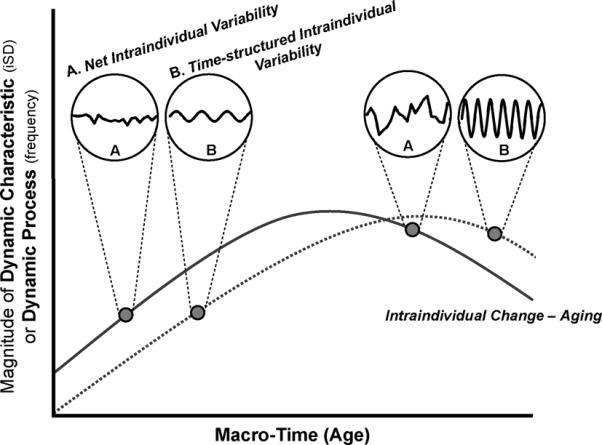Figure 1.

Intraindividual change in net and time-structured intraindividual variability. Net intraindividual variability (A circles) is characterized by changes in micro-time that are not systematically ordered in relation to time, is quantified by measures such as an iSD, and is used to capture individuals' dynamic characteristics (e.g., lability). Time-structured intraindividual variability (B circles) is characterized by patterns of change in micro-time that are systematically ordered with respect to time and/or previous observations, is modeled using time-series or other techniques, and is used to capture dynamic processes (e.g., adaptation). Differences between the circles on the left and the circles on the right indicate that aspects of both types of intraindividual variability (dynamic characteristics / iSD and dynamic processes / frequency) can differ between individuals and/or change with age. Depending on the construct, long-term changes in intraindividual variability may be best characterized by increases, decreases, stability, or other more complex, nonlinear forms of change.
